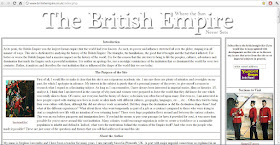Is This a Wreck Cover?
I was browsing through Ebay today and found saw this cover. It was so ugly, I just had to look at it
It was quite poorly listed as "UK Penny Red still on Envelope Cover" (so I assume it's a front only), with the following description:
(Khyu)lton & Wilson agents
134 Waterloo Road
Liverpool
P4
Mrs Hazelton
on board the
Lochmaster Castle
Docks
Liverpool
The agents name is actually Elkington & Wilson, and the name of the ship is the "Lochmaben Castle".
A quick look at Google, and I found out that the ship was wrecked in 1855:
"Lochmaben Castle, for Quebec, was ashore on the Bird Rocks, Gulf of St Lawrence, 4th June. Passengers and crew saved"
and this:
"WRECK OF A VERY CROWDED EMIGRANT SHIP - Accounts received at Lloyds by the American mail report the wreck of the English ship "Lochmaben Castle". Captain TURNER, with nearly 600 souls on board, on a formidable reef known as the Bird Rocks, in the gulf of St Lawrence. She was a first-class ship of 1,600 tons, and left Liverpool on the latter end of May, for Quebec, with 537 passengers, men, women, and children, and a cargo of rice &c. On the 14th ult., thick, hazy, weather set in, and she ran upon the Bird Rocks. Signals of distress were fired, and the greater part of the cargo thrown overboard"
Although she was a significant vessel for the time, at 1,600 tons, I haven't yet been able to find an image of her in my usual references.
The stamp is SG8, 1d red imperforate, which was in use from 1841 to 1854 when the perforated 1d red was issued, so time wise, the franking is just possible. The postmark is a London Inland Section, horizontal oval with number in diamond, that was in use from 1844. The manuscript "P4" marking requires further research, as it indicates payment of an additional 4d. The cover is water stained and the stamp appears to have moved left.
I might be barking up the wrong tree, and this is nothing more than a cover that travelled on one of the many voyages of the Lochmaben Castle, and was simply damaged.
This is a good example of learning to read old script if this era interests you.
I'll enjoy the research when it arrives, and I will have lost very little if it's just a damaged cover, as it cost me a grand $10!
















































